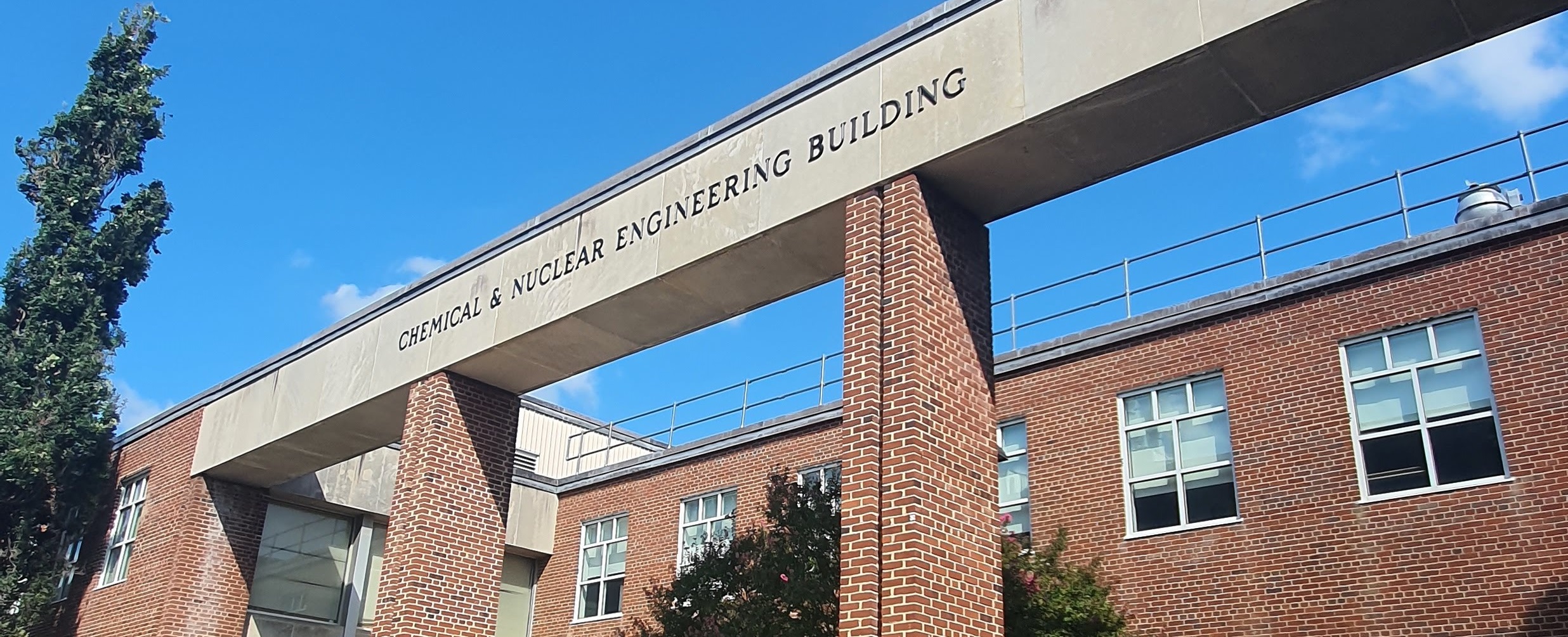
Are you looking to use an exchange for a relaxing semester away from home? Are you looking for an easy GPA booster via a pass/fail term? Are you looking to “broaden your horizons by experiencing new cultures”, more commonly known as a vacation? If you answered yes to any of the above questions, this guide is not for you.
If you are an academically rigorous student looking to use the exchange to study a complex topic not taught in Singapore, if you’re looking for ways to practice hobbies which are too heavily restricted in Singapore, if you’re looking to make connections to propel your future career, or if you’re interested in postgraduate studies, this guide is for you.
The Case for an Exchange
I’ll start by explaining why I chose to go on exchange. I am a big believer of nuclear energy, and I believe nuclear energy is a vital part of decarbonisation globally. Unfortunately, there is nowhere I could ever hope of studying nuclear engineering in Singapore, which is why I’ve been eyeing GEXP ever since Term 1.
If this sounds familiar to you, either directly because of nuclear engineering, or if you’re interested in other niche topics such as radiation engineering, quantum physics, aerospace, rocketry, quantum computing, plasma physics, or anything of the like, this guide is for you.
So if all that applies to you, and you’re still in terms 1-3, this is what I recommend you do:
- Choose the Self-Directed Track of whichever pillar you are in
This is virtually mandatory. Niche specialisations will not map cleanly to any SUTD mods. Choosing Self-Directed lets you take 3 unrestricted electives and clears you of any course requirements. Personally, I feel like it also makes you a more interesting applicant wherever you go, so I don’t see any downsides myself. - Join a UROP related to your field of interest
Doing undergraduate research in your field of interest is important to demonstrate your passion to recruiters, scholarship providers, and professors at your exchange university.For example, one of the mods I wanted to take on my exchange was a nuclear materials mod, and required an intro to materials science course as a pre-requisite. In EPD, we have a materials mod in Term 4, called Structures & Materials, however, the content covered is only half of the equivalent mod at my exchange university. I was able to use my UROP research – New Materials for Nuclear Fusion – as an extra bargaining chip to the professor to let me take the course, since my research was directly linked to the mod I wanted to take.If you can get a publication out of your UROP, that will also provide a big boost to your portfolio and application chances into gradate school. - Look through the list of schools available for exchange and narrow down your choices to only schools offering your field of interest.
For me, only 3.25 universities in the list offered nuclear engineering: University of Maryland, Texas A&M University, KAIST, and University of California – Berkeley. I say 3.25 because University of California only offered nuclear engineering at Berkeley, not any of the other colleges, and I had to choose 4 for application.I decided not to apply for University of California due to limited time, but if this situation happens to you, I leave it to you if you want to apply for them as a last choice for security.An additional aspect you may want to consider is if the university offers graduate school in your field of interest. If yes, the exchange would be a great time to scope out graduate school directly.For me, I ended up prioritising the University of Maryland. University of Maryland offered me 2 ‘introductory’ nuclear modules – ENME430 Fundamentals of Nuclear Reactor Engineering and ENMA422 Radiation Effects of Materials, which were perfect for me as they had no nuclear pre-reqs. Moreover, it has a great depth of technical student clubs, and is in great proximity to MIT, which I hoped to make a pilgrimage to.
 Perhaps an interesting side-note: the US Navy came to my reactor engineering course for recruiting. I suppose that’s a good fallback.
Perhaps an interesting side-note: the US Navy came to my reactor engineering course for recruiting. I suppose that’s a good fallback. - Choose when to do your exchange
There are 2 main periods your exchange can take place in – Fall or Spring. In both cases, the exchange term will replace your Term 6.I recommend choosing the Fall exchange, as it will allow you to do your internship as 1 long internship across Spring and Summer of the next year, which will allow you to forge a deeper bond with whatever company you are interning for. Now, this is only for those who are sure of where they want to go, but even for those who aren’t sure, you are still allowed to do 2 back-to-back internships with different companies, and you set the timetable. All-in-all, the flexibility of the Fall exchange wins in my book.However it is also important to note that this also depends on the mods offered. If the mod you are interested in is only available in the Spring, then disregard this section and go for the Spring exchange. - Plan your Mods early
Exchange offices will tend to be slow. This is understandable as they’re probably juggling hundreds of students both ways. However, what this means is you’ll likely end up applying for mods in the exchange school’s portal much later than native students.So what I recommend is this: look at the mod list for last year, pick out 6-8 mods that you would like to do, and sort them according to your priorities. Then, keep track of enrollment of each of these courses. If any of them looks like it’s getting too full (above 50%) and you haven’t received application instructions, I would recommend emailing the professor in charge of that module, introducing yourself, asking if the course will be offered again during your exchange period and requesting if they can hold a place in the course for you. It is vital in this email to be polite, and to demonstrate your interest in the subject. Most professors love enthusiastic students, and may be willing to hold a place for you, but do keep in mind this is far from a sure-thing.
Challenges you will Face
Most likely, the steps I’ve listed above won’t go smoothly. Here’s some advice I wish I knew before going into this.
- Planning
It is highly recommended to, from Term 1, start thoroughly thinking out your exchange study plan, referring to which mods you will be taking, and even your SUTD course map. This is quite difficult because you can’t know what is in SUTD mods until you take them. I recommend talking to seniors and professors, especially your SUTD Mentor, to map out a potential course map.I only started thinking about my exchange mods in Term 3, and it was quite a lot to juggle alongside the exchange application process, the graded courses in Term 3, visa applications, and scholarship funding applications. - Funding
As implied above, an Exchange will cost you a hefty amount. Conservatively, I spent around S$20k on my exchange to the University of Maryland after counting flight tickets, housing, dining, and daily expenses. Safe to say, this is not a sum of money easily on hand for many SUTDents. Lucky for those of you still reading this post, you’re probably not like most SUTDents. Prioritise getting a perfect GPA, and apply for as many scholarships and awards as possible to offset the costs of the exchange. Do this right, and you can even come out of the exchange having net some money. - Visa Complications
Visas take a while to process. I would recommend not to stress too much about the visa until you have received the appropriate paperwork from the host school. Once you have received it, make sure to complete all the necessary proceedings as soon as possible, so you can receive your visa early and never have to worry about it again. - Time
This problem arises mostly once you are a student at the host university. Given the promises you’ve made to whatever scholarship provider you’re now signed to, to the profs who reserved a place in their course for you, to your mentor who helped you map out a course map, you’re probably going to experience a great pressure to succeed academically at your host university.It is very important to prioritise academics at your host university, even though it is a Pass/Fail term. The thing is, postgraduate schools will generally ask for your transcripts at exchange, and take the grades into account even if they are supposed to be pass/fail. So make sure you keep your head above the water at your host university. Be prepared for courses that move at a faster pace than SUTD, especially if attending an American university, and be prepared to sacrifice on some vacation-y activities that your peers will be doing.
Making the Most out of the Exchange
Once you’re at the host university, there are a few more things you can do to make the most out of your exchange.
- Attend office hours
Attending office hours allows you to talk with your profs about your research interests and how they intersect with course content. Forming bonds with professors is also important down the line as most postgraduate applications require 3 letters of recommendations from previous professors, mentors, or supervisors. This does not mean that should be your only reason to mingle with them, of course. You should engage with them enthusiastically an naturally, but never be afraid to contact them. After all, you’re spending thousands of dollars just to see them. - Look out for interesting Student Clubs
A benefit of going to exchange is that the host university probably has all kinds of interesting clubs not available at SUTD. For example, at UMD, there are rocketry clubs, a BattleBots club, and even a club building cybernetic arms. These clubs usually much better supported than clubs in SUTD, and will even fully fund student projects, so take full advantage of them. I will talk more about this in Part 2 of the guide. - Start scoping out your graduate school of choice
You probably already have a graduate school in mind, renowned throughout the world for their expertise in your field of interest. For me, this was MIT, one of the best schools in the world for nuclear engineering postgraduate programme, well connected to NIF, and well funded as well. I managed to get connected with a prof at MIT through my research, and was able to meet him in MIT during my exchange. I will elaborate more on this in Part 3 of my guide.
If you have any other (genuine) queries about making the most out of your exchange, feel free to contact me by email at colin_teoh@mymail.sutd.edu.sg, and I’ll gladly answer any questions you have.






























